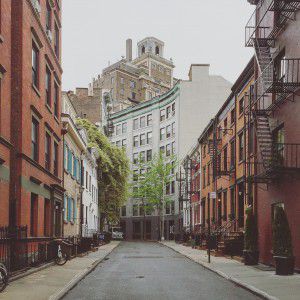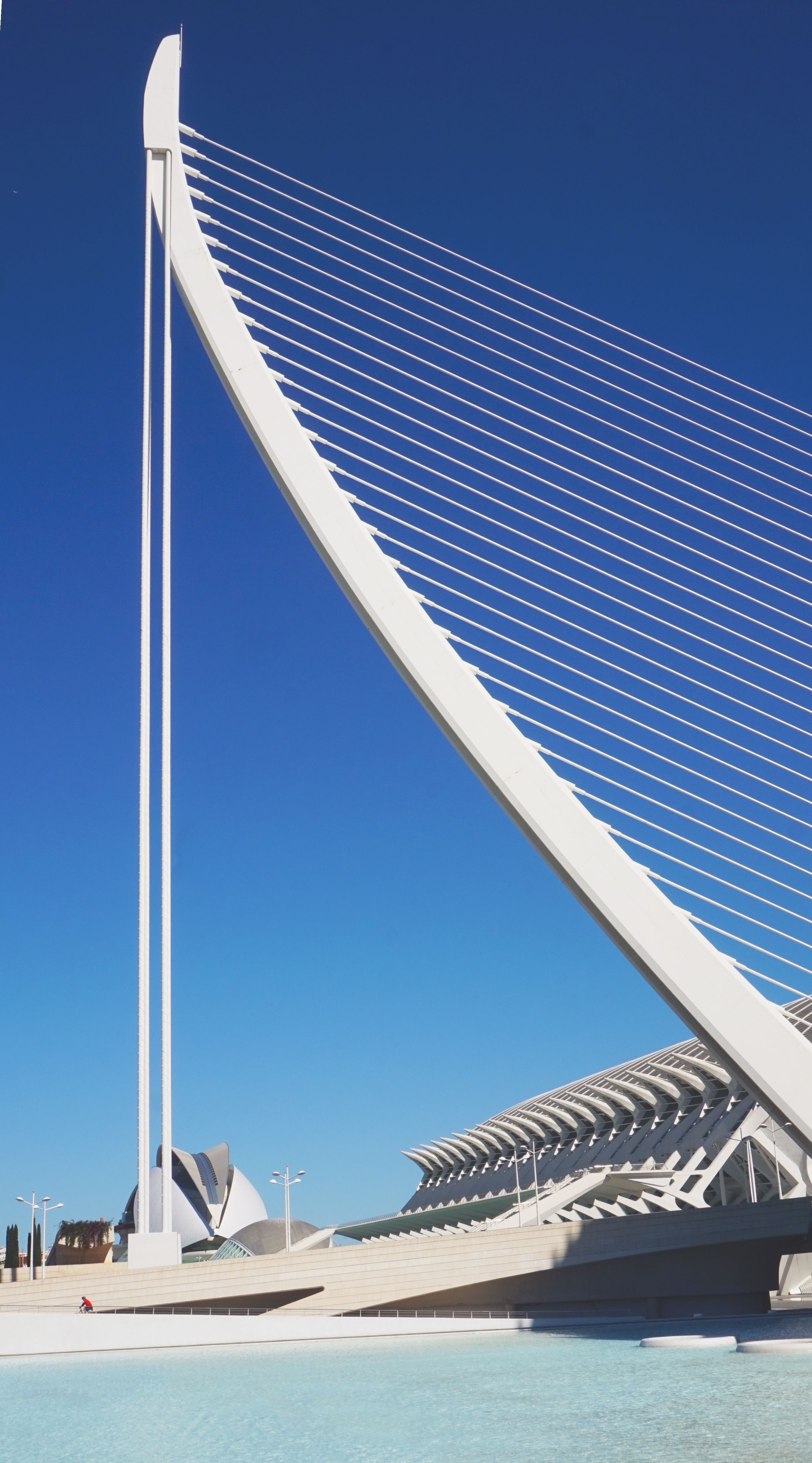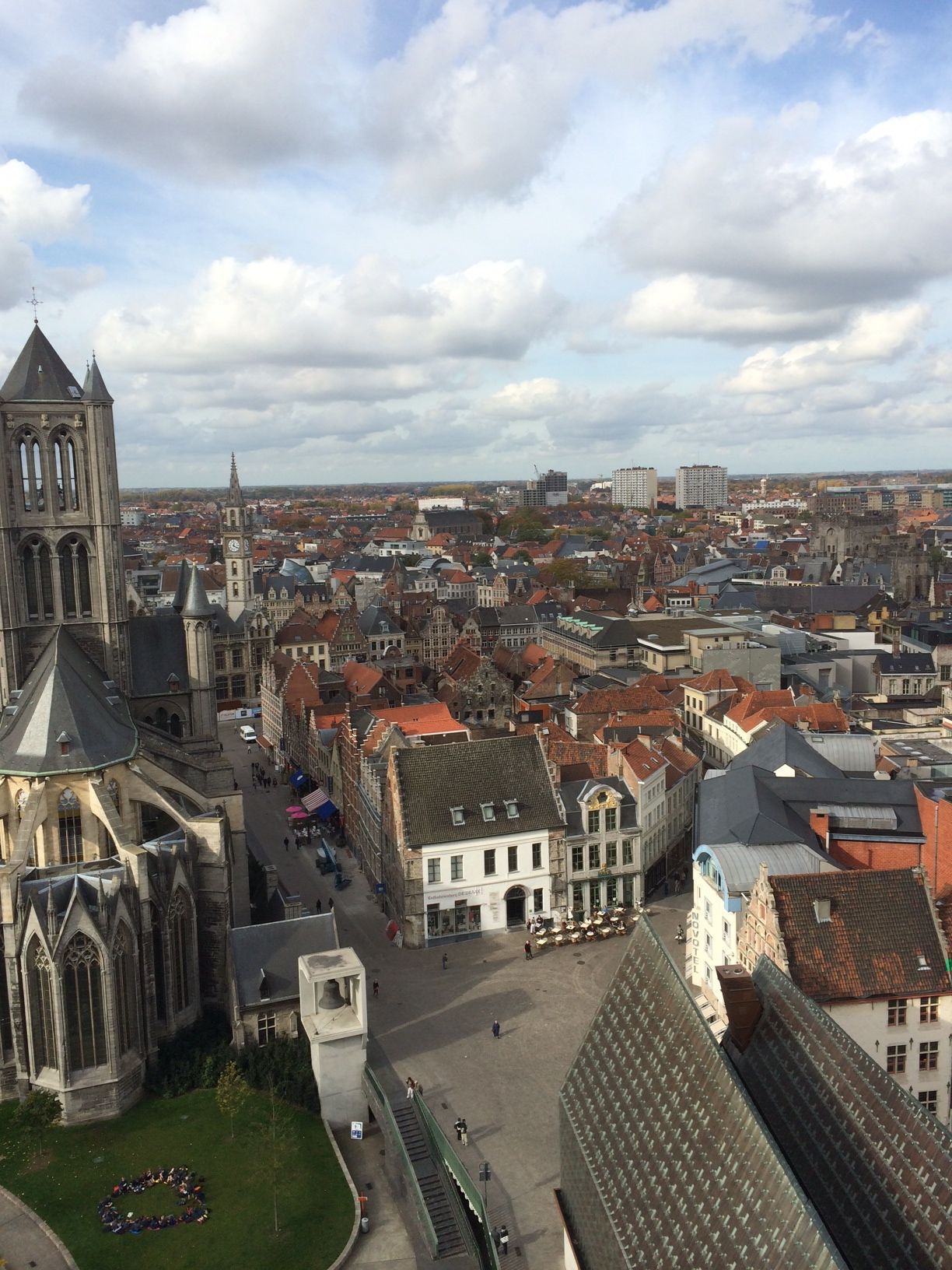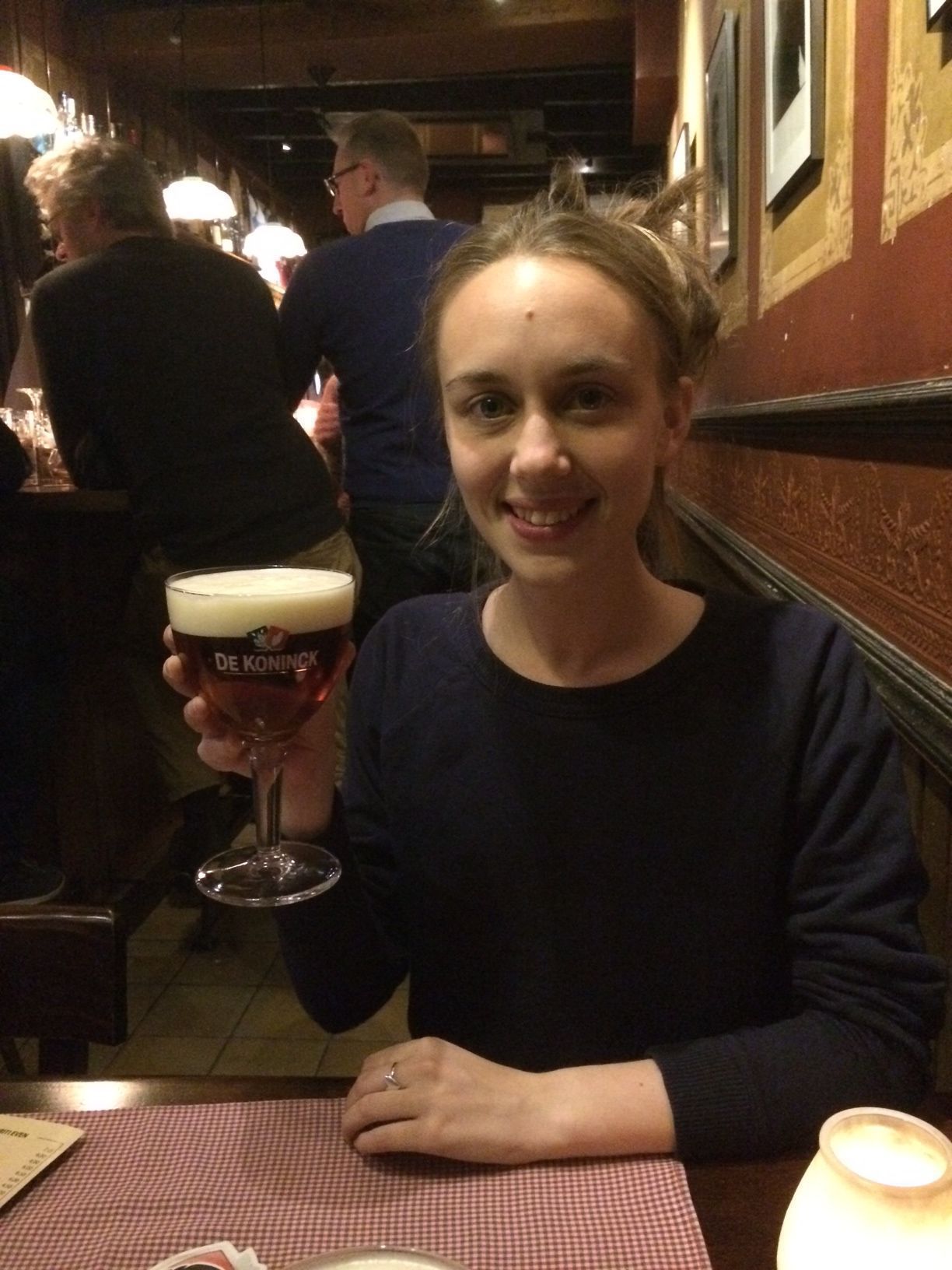Destination: New York, USA
The reason why New York is a super popular touristic destination is because it’s such a diverse city and it has something for everyone. More than one person told me before I went “Oh, you’ll love it! It’s my favourite city!”
So what makes it so loved? New York is definitely impressive. All the famous places you’ve seen in movies, the skyscrapers, rushed people, Central Park, they all make you feel the strong impact of this powerful city.
If you really want to “feel” the city and get that really local feeling, I’d suggest saving up and finding a place to stay on the Manhattan island, either a hotel or an airbnb – it’s close to everything and you’ll earn more time to look around than spend on transportation.
I’m not usually the type of tourist to go on the beaten path but some of the popular places have really fascinated me, like Top of The Rock, which is a three level observation deck at the 67th, 69th, and 70th floors of 30 Rockefeller Plaza. The Empire State Building is another place you can get 360° views of the city, however if you have to choose between the two, I’d go with Top of The Rock; it has windows instead of a fence and the highest level doesn’t have any restrictions. It’s totally safe though, I promise. Timing of the people going up is more organised and you actually have enough space to take photos and enjoy the view.
Take a day for Central Park, it’s a fantastic place. If you’re working your way up North, on the West side of the Park you’ll find the Guggenheim Museum, which is a real masterpiece of architecture and a great art museum.
West Village and Greenwich Village are definitely the cutest districts. If you’re a fan of Friends, that’s where their famous building is! Sadly, it’s just a normal residential building, as the show was all filmed in studios in California.
Another interesting place that I loved was The High Line. It’s an old elevated section of a railway in Chelsea district transformed into a 1.45-mile-long (2.33 km) linear park. While you’re there make sure to see Chelsea Market – an old factory now transformed into an indoor food hall. They have amazing food from all over the world. It’s very hard to resist eating everything in sight, don’t say I didn’t warn you.
There are many great places in New York that are waiting to be discovered. Just get lost on the streets of different districts and wander around, they all have their own unique character.
Travelling to New York? Be prepared with uTalk – you can use it from over 100 languages!
Ioana
Destination: Valencia, Spain
Next up on our list of top holiday destinations is Valencia – here’s Ioana to explain how the Spanish city captured her heart…
The fact that it’s not one of the top touristic destinations in Spain, had me not really knowing what to expect of Valencia. Of course, I was looking forward to amazing paella, sunny skies and tapas, but Valencia has its own special charm that makes it feel like everything that you’d expect of Spain but better. Valencia has surprised me in a delightful way and I want to share my excitement and love for this place.
Not too big and with very good public transport options, it’s a very “manageable” city, as a former local told me. They love bikes over there so if that’s your thing, research on how you can rent a Valenbisi. Walking is a pleasure – beautiful old buildings and orange trees that decorate many of the pavements.
What used to be the bed of the the river Turia was transformed into a huge park with plenty of vegetation, sports courts, fountains and the futuristic looking Calatrava buildings and bridge, collectively called the City of Arts and Sciences, including a planetarium, an oceanarium and an interactive museum. Feeling like you’re about to embark on a spaceship, the beautiful buildings make it hard to take your eyes off them. All white and with bold curves and angles, decorated with light blue water fountains all around, it’s very easy to be impressed by the architect’s talent and vision.
South of the park is the old city centre, which is best explored by foot. All the little streets are beautiful and each neighbourhood has many cafes and bistros where you can take a break and indulge in the delicious Spanish cuisine. One of my favourite places is Plaza de la Reina. The fact that we had some amazing chocolate con churros at one café of the many around the plaza does not influence my decision at all 😉
Where do the cool kids hang out? I hear you ask me. The answer is Russafa. It is the hip neighbourhood with a rich cultural mix which makes it the favourite social place for both tourists and locals. The classic Spanish buildings are home to many restaurants and cafes with delicious pastries. The nightlife here is very lively and is the kind of place where on a hot summer night you might accidentally walk right into a street festival.
In only four days Valencia has managed to make me fall in love with it and quickly climbed and reserved a spot in my top 3 favourite places in the world. Characterful, filled with culture and history, great food, amazing weather and happy palm trees, Valencia surely knows how to impress.
Heading to Spain this summer? Remember to download uTalk before you go so you’re prepared with some basic Spanish conversation!
Happy Baba Marta!
Today is “Baba Marta Day”. In Bulgaria the 1st of March marks a holiday that welcomes the upcoming spring. “Baba Marta” translates to “Grandma March”, the mythical character who brings the end of the bitter cold winter!
On this day people exchange “Martenitsi”. These are red and white coloured bands or figurines that symbolise health and happiness. The white initially represented human nature and strength, whilst the red showed health and the woman’s nature.
The most traditional martenitsa consists of two small dolls (male and female) and are called “Pizho and Penda” (Пижо и Пенда). Martenitsi come in many other shapes and sizes and people wear them as lucky charms.
The tradition is to wear your martenitsa until you see some signs of spring: blossoming trees or birds like storks and swallows. Some people then tie their martenitsa to a tree – so next time when walking through a park, if you see red and white yarn bracelets hanging on a branch, you know the mystery behind it! It was also believed that people placed them under a rock. They would then come back nine days later to see if there had been any ants; if there were the year would bring lots of sheep. Some people also chose to throw them into the river and let them flow away, representing the troubles of life leaving.
Thanks to Nikolay, who made us all martenitsi to wear today! Let’s see how many of our wishes come true…
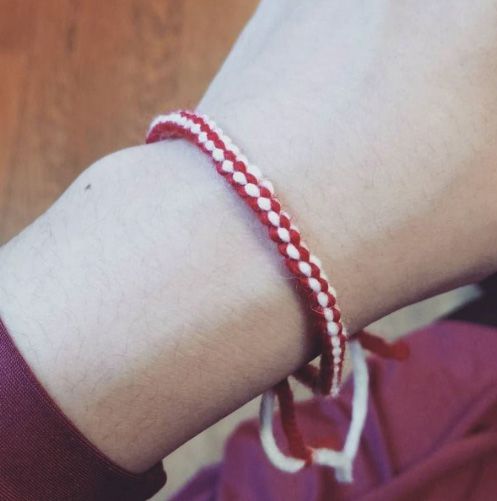
Bonus fact: “Mărţişor” is a Romanian holiday that is similar to “Baba Marta”. It’s also believed in Romania that wearing the red and white bands leads to a prosperous and healthy year. The threads are hung somewhere outside the house like a gate to protect against evil spirits. Today the threads are still bought by people for their friends and family to show admiration.
Happy Baba Marta!
‘Zewg birer, jekk joghgbok’ (or How to say ‘2 beers please’ in Maltese)
Katherine is one of our uTalk Challenge participants; she chose to learn Maltese in preparation for her holiday in the sunshine! Here she shares a few of her language adventures, and explains why she found knowing a little bit of the local lingo made the trip even more enjoyable.
Learning Maltese probably counts as one of the more pointless things you could do in life, as it is only spoken in two small islands, where everybody speaks very good English. But being in the position of having a week’s holiday booked in Malta for the last week of January, it seemed like the perfect thing to do for January’s uTalk challenge; after all, it is a language, and a very interesting-sounding one at that – it appears to be a mixture of Italian, English and Arabic. And what a great place to visit in January too, with the sun shining and temperatures in the high teens.
So here I am with my “gelat” (ice cream) in front of Mgarr in Gozo (the harbour where the little ferry arrives from Malta, just a couple of miles away), with some people talking on a “dghajsa” (boat) behind me, and the “xemx” (sun) shining brightly. And then with my husband at the “Tieqa Zerqa” (the Azure Window), which is one of the features shown in the final uTalk topic about the country. That section is great when you actually get to the country, as you can recognise places and know how they should be pronounced. In fact, having got the gist of how the combinations of letters are pronounced, it was great fun to be able to say the place names and street names and even read some notices, picking out the odd word or two.
It was on our outing to Gozo that I had my highlight of the week, language-wise. I was able to order some coffees, one black and one with milk and some local snacks (also featured in the Malta topic, so I knew they were the local delicacy)! I also asked for the bill and said goodbye etc; this all delighted the elderly lady serving us, in fact maybe we made her day! Not quite such success later that same day, when I came to use the phrase top of any uTalker’s list – “Zewg birer, jekk joghgbok” (2 beers please). I thought I had said it wrong, but it turned out the waiter was from Serbia!
So, even though it was not at all necessary to learn Maltese to visit Malta, it definitely enhanced my holiday to be able to do so a little bit. And what’s more, even though I suspected I had been learning the words and phrases just to amass the points and they wouldn’t stick, I found that they kept popping into my mind, so in fact they had stuck!
A great challenge, and I’m looking forward to next month’s new language!


